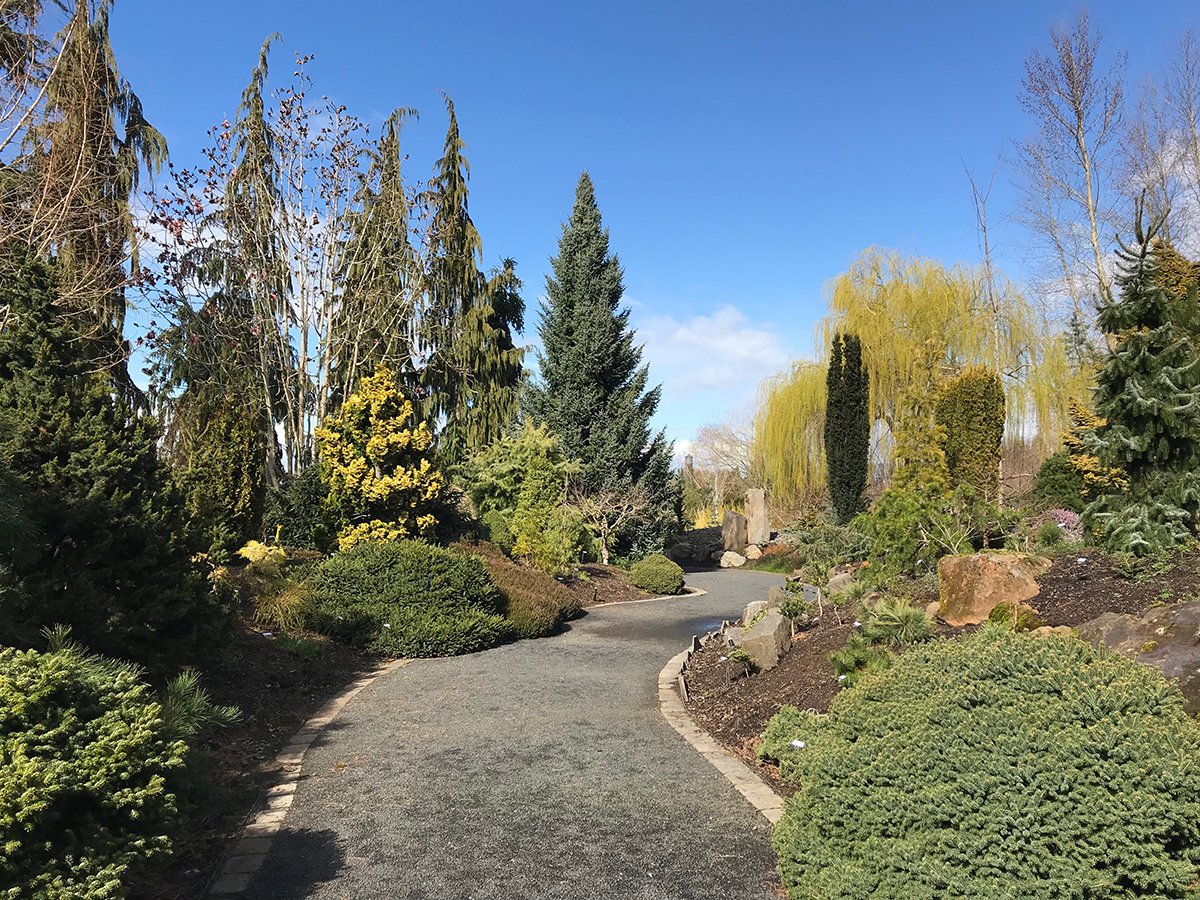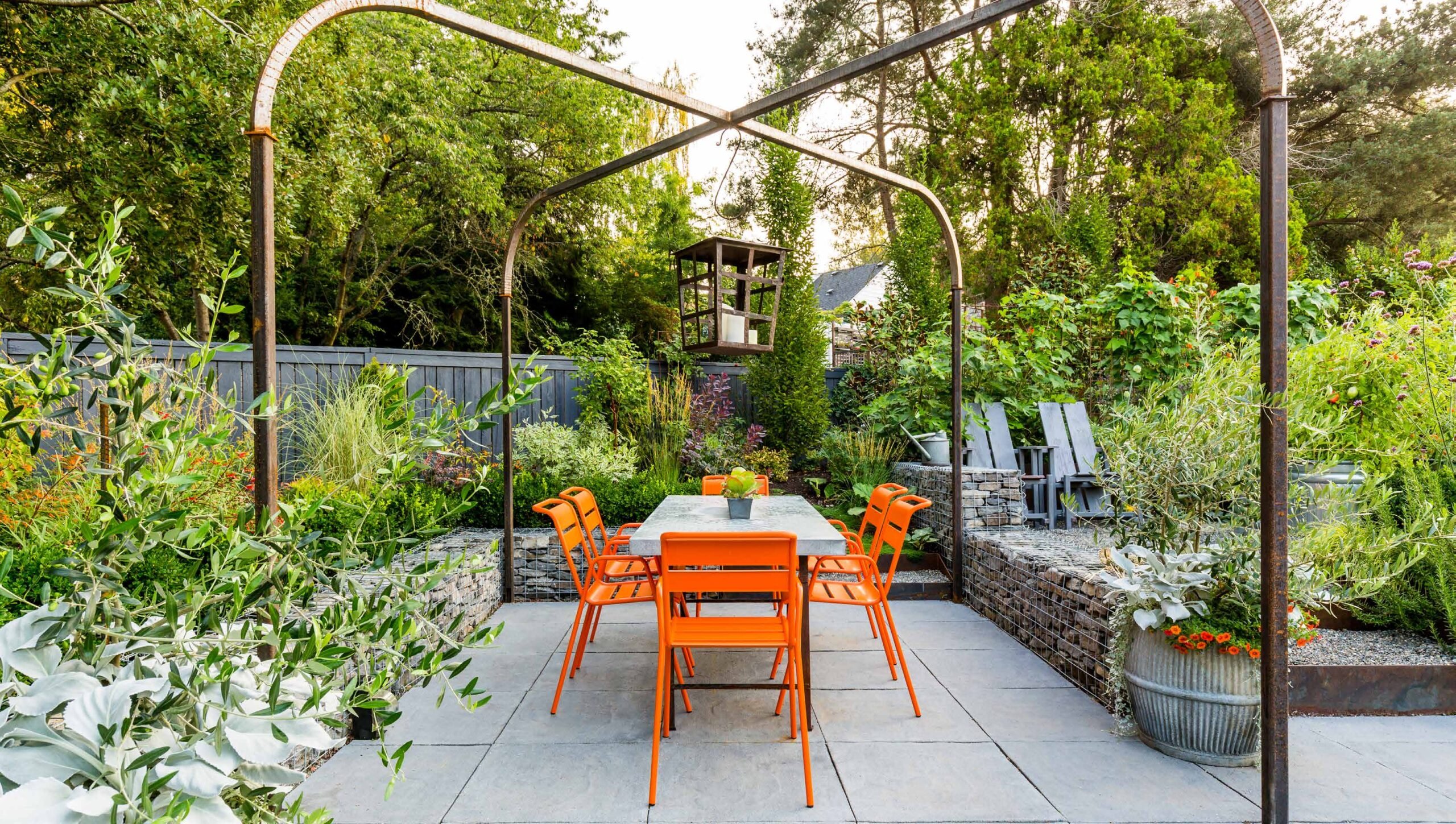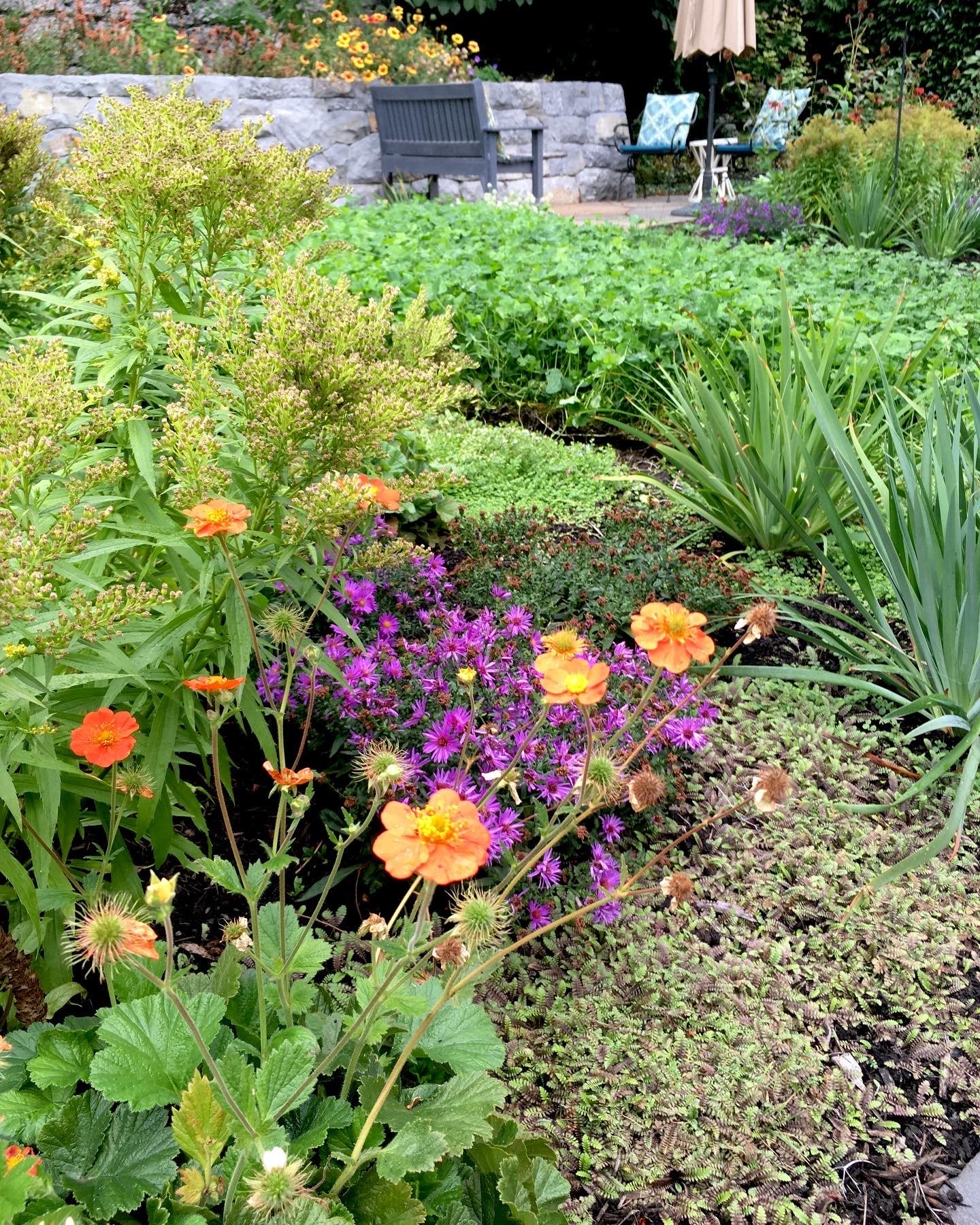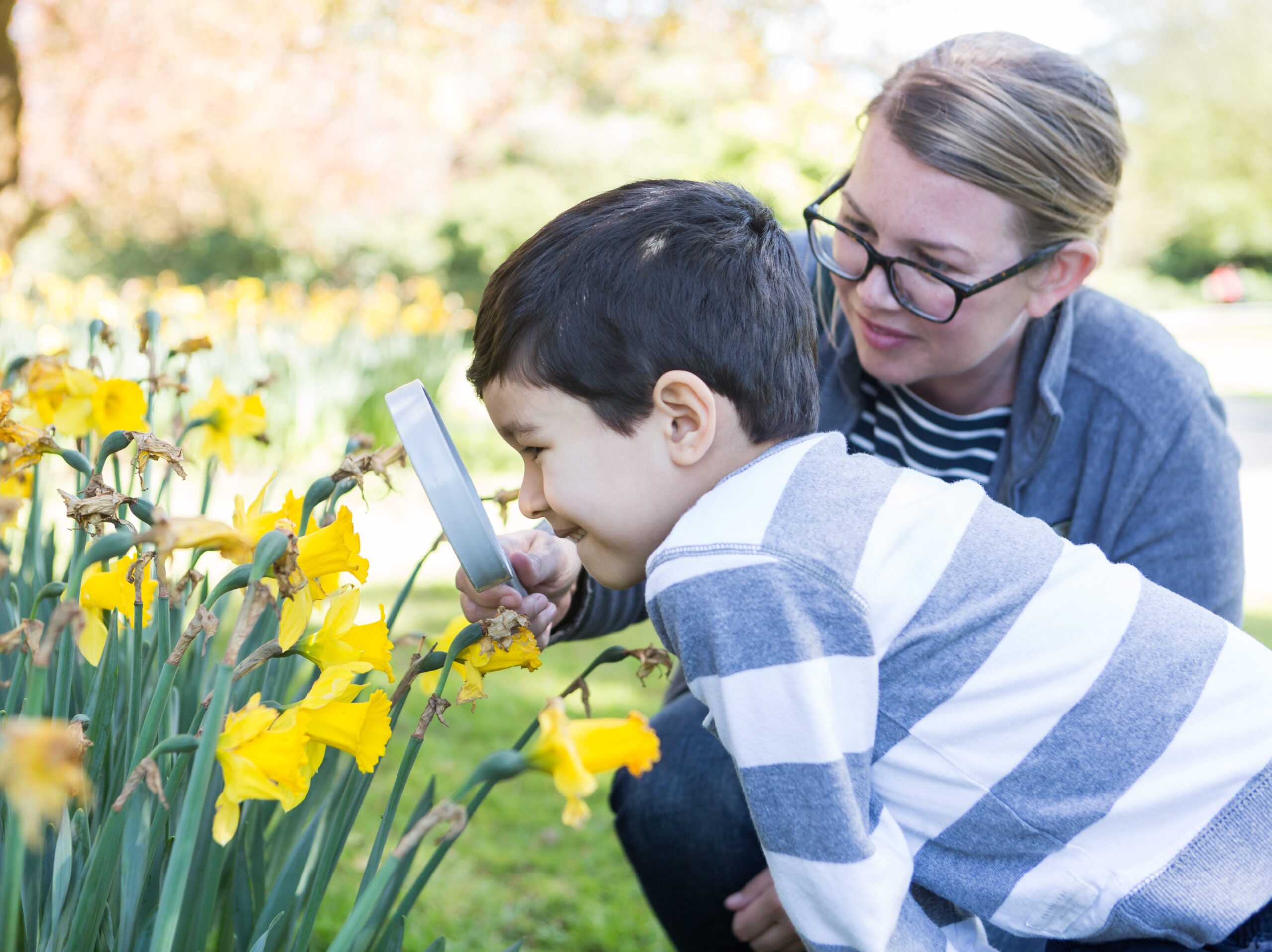
The Human Benefits of Gardening and Visiting Public Gardens

Contributor
- Topics: Nature is Good For You
Winter 2022
Introduction
When my family moved from their cramped Brooklyn apartment to a just-completed house on Long Island, my dad ventured into the world of gardening for the first time. He dutifully planted seeds and starters he found at a local hardware store and waited for results. After a couple of weeks, he pulled up a radish plant by the stem and was befuddled that there was just a single root to harvest, rather than the bunch he had always purchased from the store.
While this bit of family lore has been passed down as reflective of my parents’ lack of readiness for their new suburban life, it also reveals the strong human impulse to garden, regardless of knowledge or experience level. While not necessarily essential, all forms of gardening are valuable, in ways long known and others just being revealed. As E. T. Cook wrote back in 1911, “Nature—the Mother of Gardens—holds in her bountiful hands the inexhaustible gift of life, and horticulture is one of her chosen handmaidens to distribute the blessings which she is able and willing to bestow upon all who will work for them.”
The importance of growing things has not always been fully appreciated. As Sue Stuart-Smith (2020, 26) describes in The Well-Gardened Mind, “Although gardening is a creative act, it is not always held in high regard. Sometimes it gets trivialized as a ‘nice’ hobby or is pigeonholed as one of life’s luxuries; equally it may be relegated to a form of lowly manual labor.” I would like to step back and share both research findings and personal accounts, in order to develop a full picture of the physical and mental benefits of all scales of gardening.

The Known Benefits of Time in Nature
Over the past couple of decades, scientists have conducted and published a wealth of research about all the ways we benefit from contact with nature. We now know that spending time in green spaces lowers blood pressure and salivary cortisol levels, both associated with reduced stress and anxiety. Nature experiences can also lower heart rate and improve concentration, memory recall, and overall mood.
While these are the best documented benefits, researchers have also provided evidence that after spending time in natural settings, people display lower levels of depression and aggressive behavior, have better sleep patterns, and even longer lifespans (Frumkin et al. 2017). Some of these studies were based on observing groups of individuals after either walking through a wooded area or along an urban street, while others involve test subjects who were simply asked to sit in a forest for a period of time, or just to observe nature through a window.
The Specific Benefits of Gardening
Gardening provides all previously listed benefits, and because of the physical activity involved, it also burns calories (Zick et al. 2013). According to the Centers for Disease Control and Prevention (2020), one hour of light gardening can burn 330 calories, the equivalent of walking at a moderate pace for the same amount of time. Such activity can also result in reductions in weight, and lowering the risk of Type 2 diabetes, arthritis pain, and osteoporosis.

For folks dealing with chronic anxiety, depression, or low self-esteem, the garden can be a great source of solace (Clatworthy, Hinds, and Camic 2013). Helping a pepper ripen or a rose bloom can bring a sense of accomplishment. The garden can also be a sanctuary, where an individual can be their truest self. “In a garden the level of background noise falls away and you can escape from other people’s thoughts and judgements about you” (Stuart-Smith 2020, 31).
Further benefits are based on the type of gardening one pursues and how it is carried out. It is tempting for the vegetable or fruit gardener to select seed catalog varieties that purport to have the biggest, most productive, or most pest resistant yields. But older gardeners may instead choose to grow heritage types that remind them of the tomatoes or apples they knew in their youth, or immigrants may opt for the specific vegetables they remember from their countries of origin, turning their produce into familiar recipes that bring joy and nutrition in equal measure.

Landscaping a property with ornamental plants, shrubs, and trees can be a deeply personal and creative act, in which the gardener establishes a dialogue with the plants that defines a set of feelings about life and nature. This dialogue must, by necessity, be one that is carried out over the years, through seasonal cycles, growth and decline, wonder and defeat. Ornamental gardens come in all forms, with each reflective of the garden’s creator. On this three-dimensional canvas, each plant becomes an art object, interesting in itself, but ultimately assessed by how well it blends into the overall design of the landscape.

Challenges to Successful Gardening
All plants are living organisms, and as such benefit from the sun, rain, soil, and pollinators, while being susceptible to insects, pathogens, floods, and droughts. The conscientious gardener can study the conditions under which particular cultivars grow best, and place them in appropriate sites. They can provide extra irrigation during dry spells, apply sprays to repel pests, or fertilize soils to promote new growth.
No set of precautions, however, can guarantee successful plantings. In our own garden, the 2020 growing season was exceptionally dry, so we provided lots of irrigation in the vegetable garden and were rewarded with a bumper crop of butternut, buttercup, and summer squash. In 2021, however, the rains came early and never seemed to end. Even though we grew the same cucurbit varieties, we harvested almost nothing from that plot.

Being a gardener means developing a heightened awareness of weather patterns, soil conditions, insect infestations, and weed invasions: we scramble to cover tender seedlings when a late spring frost threatens; prop up young trees blown sideways by the wind; and pick off dozens of insect pests that seem to appear overnight. Through these acts, we face nature in a true and unromanticized manner, seeing it as neither a positive force meant to serve us nor as an evil entity to battle. I like to think of the act of gardening as providing rich rewards that never quite reach our loftiest dreams.
Gardeners are famous for telling visitors, “Oh, you should have been here last week,” with the implication being that all plants were performing perfectly just one week earlier. But, truth be told, even in that previous week there were probably perennials covered with aphids, or annuals that had mysteriously stopped blooming, or tomatoes that refused to turn red. Rather than viewing such events as failures, we are better served by reflecting on how the dynamics between nature’s forces and our horticultural choices lead to a particular result.
The Garden as Public Entity
Not all living arrangements permit the creation of an outdoor garden. Apartment dwellers may instead establish a few fabulous pots on a terrace or go wild with houseplants in a sunny window. Such interior gardens, quite popular in recent years, can be a great source of creativity and satisfaction. For those who simply have no interest in being responsible for taking care of anything living, not even a single Philodendron, there are plenty of places to reap some of the rewards of gardens.

For both gardeners and non-green-thumbers, public gardens—such as botanic gardens, arboreta, and conservatories—provide a window into the beauty, complexity, and profundity of the plant world.
But botanic gardens in the western world have not always been truly public. The earliest sixteenth century gardens—in Padua, Italy, Montpellier and Paris, France, and Leiden, the Netherlands—were intended exclusively for study by the botanists, physicians, and pharmacists of this era. It was only in the eighteenth century in Britain, and then the nineteenth in the US, that botanic gardens truly welcomed the masses and began to offer public programs (Rakow and Lee 2015). Today, public gardens are community commons where all who enter are on equal footing.
Some research indicates that visiting a public garden can be a great source of stress reduction. Kohlleppel, Bradley, and Jacob (2002) found that visitors who receive the greatest stress reduction from a public garden visit are those with the highest self-reported depression levels. Added to this, Wassenberg, Goldenberg, and Soule (2015) studied visitors to a university-based botanic garden and found that students felt that their time in the garden not only lowered stress levels but also improved the quality of their lives.
Most public gardens are sufficiently large that one can spend hours wandering the grounds, learning the names of plant types or gaining ideas for home gardens. Beyond those attributes, the horticultural tableaux in gardens can be sources of inspiration for visitors, representing the best of human design principles in concert with natural elements.

As we transition to an increasingly urban population, public gardens also provide a vital window into the living natural world. In New York City, the borough of the Bronx has one of the lowest rates of green cover of any US city, but all residents have access (after paying the admission fee) to one of the world’s premier horticultural collections at the New York Botanical Garden. Most US cities today can boast of at least one public garden within their boundaries (New York has three), which serve as both green oases and as points of pride for the municipality.
Humans have been enclosing spaces to create gardens for at least the last 10,000 years. How we choose to garden, and how we increase access to our gardens, will have considerable impact on the environment and on the quality of human life in the decades ahead. After all, one cannot garden without thinking about the future.
References
Centers for Disease Control and Prevention. 2020. Why is physical activity important?
Clatworthy, J., J. M. Hinds, and P. Camic. 2013. “Gardening as a mental health intervention: a review.” Mental Health Review Journal.
Cook, E.T. 1911. Gardens of England. London: A&C Black.
Frumkin, H., G. N. Bratman, S. J. Breslow, B. Cochran, P. H. Kahn Jr, J. J. Lawler, and S. A. Wood. 2017. “Nature contact and human health: A research agenda.” Environmental Health Perspectives, 125 (7).
Kohlleppel, Tammy, Jennifer Campbell Bradley, and Steve Jacob. 2002. “A Walk through the Garden: Can a Visit to a Botanic Garden Reduce Stress?” HortTechnology 12 (3): 489–492.
Rakow, Donald A. and Sharon A. Lee. 2015. “Western botanical gardens: history and evolution.” Horticultural Reviews 45: 269-310.
Stuart-Smith, Sue. 2020. The Well-Gardened Mind: The Restorative Power of Nature. New York: Scribner.
Wassenberg, Christopher L., Marni A. Goldenberg, and Katherine E. Soule. 2015. “Benefits of botanical garden visitation: A means-end study.” Urban Forestry & Urban Greening. 14: 148–155.
Zick, C.D. et al. 2013. “Harvesting more than vegetables: the potential weight control benefits of community gardening.” American Journal of Public Health. 103: 1110–1115.
Share:
Social Media
Garden Futurist Podcast
Most Popular
Videos
Topics
Related Posts

Design Futurist Award Announced: Committee Shares Vision
March 8, 2023 At Pacific Horticulture, we believe that beauty can be defined not only by gorgeous plants and design, but also by how gardens

Nature Therapy from the Contemplative Garden
Winter 2022 Women’s hushed morning voices mingled with crashing waves and chattering crows. “The kettle’s still hot.” “Can you pass the honey?” Whoosh, crash, caw,

Portland Parks’ “Nature Patches”
Winter 2022 Nature is so beautiful when left to its own devices, yet crisply manicured lawns remain a status symbol. This is true in Portland,

January Showers Bring February flowers…
Fall 2022 It may not quite have the same ring to it as the old English proverb, but it has a lot more truth to









Responses